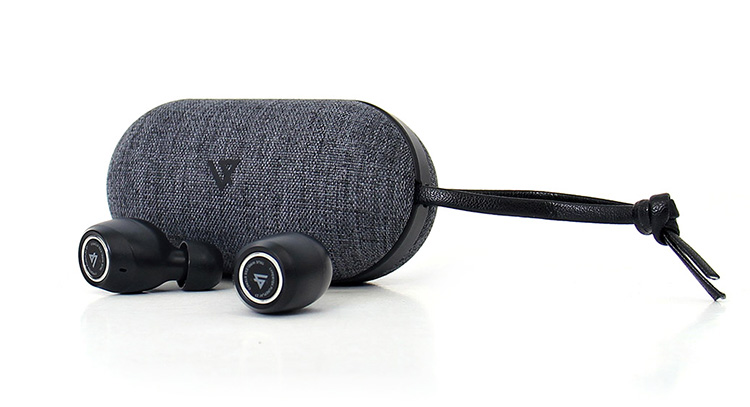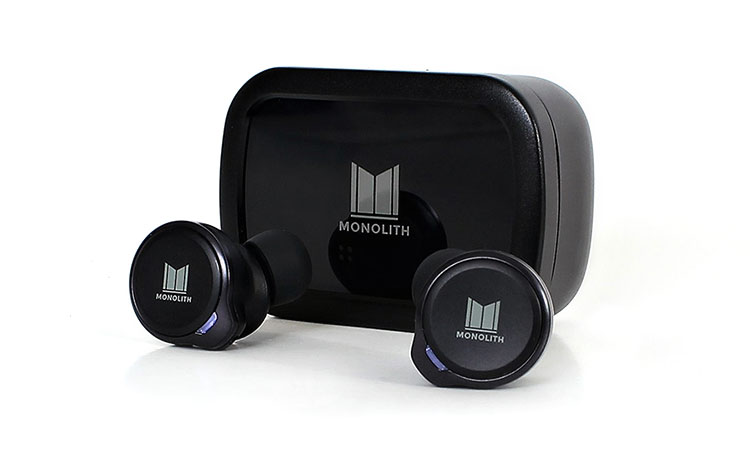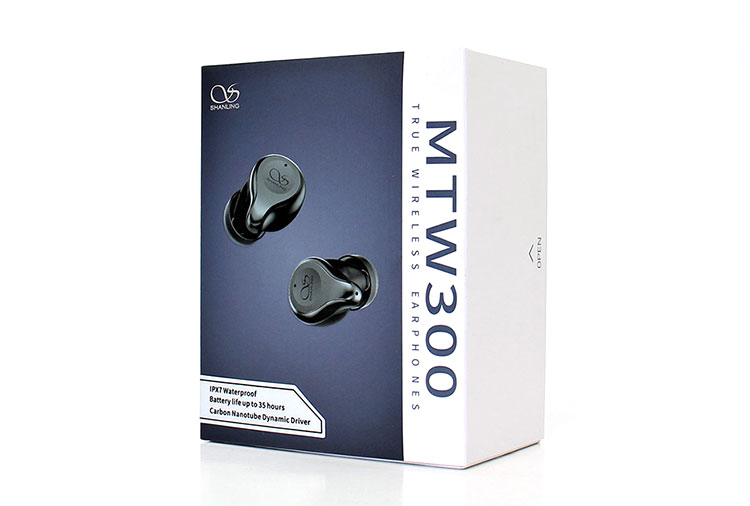Sound Impressions
Summary
I broke these in for about 30 hours just to be safe. I got a V-shaped sound signature off the Shanling MTW300. I have heard steeper curves V however and I would say volume spread across the frequency spectrum differs about 10 decibels.
The Shanling MTW comes across fairly dynamic and punchy. The sound seems to have a fairly shy midrange with most of the energy behind the mid-bass frequencies along with some upper midrange peaks.
High-frequency response seems on par with the bass but I sense a very early drop-off and I sense that frequencies above 10 kHz are either absent or subdued.
Bass
The bass is the most prominent section of the Shanling MTW300 sound signature and has most of its energy focused around the 60 Hz to 250 Hz mid-bass region which also slightly affects the lower midrange section and gives it some thickness.
Bass energy might be elevated but bass tonality is rather flat if I go by the tone sweep test which produced flat bass to around 25 Hz when it starts a steep drop off below that frequency.
Bass notes distinction is not bad. Attack and speed are not bad either and it’s safe for me to say the bass is one of the MTW300 best attributes.
Mids
Midrange response is somewhat restrained and drops in output compared to the bass. It does have some peaky areas in the upper midrange region.
The lower midrange is rather flat and warm sounding but once frequencies rise you hit peaks starting at around 3 kHz that go up to 7 kHz. I found the area between 5 and 7 kHz to be especially edgy, piercing and a touch too intense.
Treble
I always test TWS models or any other headphone or IEM for that matter with a frequency sweep and I listen for sideways movement, peaks, and dips plus I could test high and low-frequency extension.
I ran the MTW300 off an aptX source and once again I ran into plenty of noise in the upper region and in this set and more so than others.
Most frequencies above 8 kHz were absent or highly recessed and I heard lots of what I can only describe as electrical noise above 8 kHz.
Soundstage
Imaging is just decent on this TWS. The Shanling MTW300 has more depth than width though. The width just does not go beyond the ear much. There is some height which to my ears is in a second-place far as the space it occupies.
Imaging is fairly accurate and the MTW300 does well panning. Actually, placement is not bad either and you could hear some separation between instruments and elements.
3D placement is almost absent, however. Any element that takes center stage seems to be the largest in the soundstage. With the rest of the elements occupying smaller spaces.
Microphone Performance
The Shanling MTW300 has a microphone system that to me performs well on daily basic uses by being fairly receptive while at the same time keeping noise under control.
The MTW300 uses the built-in cVc 8.0 which is the latest generation microphone noise suppression system that uses a feedforward and feedback system to keep the noise down plus it removes echo, feedback, wind noise while still keeping your voice clear enough to be understood well.
Looking at the earbuds I see two holes which could mean a dual microphone system but there is no mention of that within Shanling’s literature so I could assume that or perhaps one is a driver venthole.
Wireless Performance
Stability and Range
I get better wireless performance from the QCC3040 TWS models like the Shanling MTW300 far as distance is concerned and need I remind you, the 3040 chip is a low transmission power rated BT chip.
I used my trusty Android phone, plus a FiiO BTA30 and with each unit, I got a little over 40 feet away from the transmission source which is better than most with the old 3020 chip but I still got a few feet more from similarly equipped TWS models.
Pairing
Another area I think improved over the old SOC is pairing ability. In the past, I would run into what I call bugs. You know, it doesn’t connect sometimes, or just drop the connection, past units sometimes suffered from those issues.
The few weeks I have been using the Shanling MTW300 I’ve had no issues whatsoever. The initial pairing was automatic almost and I think the earbuds had to be reset once because the left side did not connect.
Since this pair has the TWS plus feature all I had to do was reseat the left earbud inside the cradle and once I removed it, the connection fixed itself and this happened only once.
Latency
Latency? What is that? To be honest I probably heard at least 2 dozen TWS models and none had a serious issue with latency. However, this QCC 3040 chip seems to have cut the average 0.2 seconds of latency the past iterations presented down to a very low 0.1 seconds.
I would say these TWS are one of the better sets when it comes to latency and if that is important to you I would recommend these.
Select Comparisons
Lypertek PurePlay Z3
$89.90
Technical
The Lypertek PurePlay Z3 is another recently released TWS that uses the QCC3040 with a single dynamic driver and has a very similar configuration to the MTW300. Codecs and all that are identical.
One thing I noted was that the Lypertek Z3 has better long-range reception by about 3 feet which is not a big deal but sometimes every little bit helps as they say.
Design
The PurePlay Z3 TWS comes in 2 colors while the MTW300 only comes in one style but it seems the small price difference affected the outcome of these products. The $30 difference buys you a TWS with a charging cradle that has an all-metal construction.
The Z3 is completely constructed of plastics throughout. The Charging cradle is also larger but on the plus side, it’s much lighter. Another plus is that it seems the battery inside the Z3 has a higher capacity which translates into more time usage on one full charge.
The earbud designs are different also in the materials used. The Z3 earbuds are made of plastic while the MTW300 uses silicone. The Shanling MTW300 earbuds are the smallest and lightest in this comparison.
Another major difference is in the control method. The Lypertek set went with a push-button instead which works well but I do prefer the touch controls for the fact that to activate the earbud functions on the Z3 you have to press the button on the earbud and that sometimes can introduce some ear discomfort.
Performance
Sound-wise, the Lypertek might have the edge in this 3 TWS comparison. The bass is a touch more on the neutral side but still not completely neutral with a smaller emphasized bass that does not affect midrange response much as the MTW300 bass does.
The Lypertek has one major peak at around 3 kHz while the MTW300 has a few mostly centered in between 3 kHz and 7 kHz.
The high-frequency extension is a touch better on the Lypertek Z3 which is fairly audible above 10 kHz while the MTW300 drops quickly and off the map above 8 kHz.
Monoprice Monolith M-TWE
$99.00
Technical
The Monolith M-TWE uses a different Qualcomm chip which is the QCC5124 which is a BT 5.0 chip but is a more upscaled chip according to Qualcomm.
One thing I really like about the M-TWE is the downloadable app called SonarWorks which has a basic app which by trial and elimination process of EQ settings tunes the M-TWE sound signature to suit your preference. It also includes a 10-point parametric equalizer in case you don’t like the results.
Codecs are basically the same as well offering the big 3 which are aptX, AAC, and SBC. Wireless performance was the worst of the three and I could get 38 feet away from the source as opposed to 40 and 43 feet on the two 3040 SOC equipped units.
Design
The M-TWE has differently designed earbuds which are probably the largest of the three but differ in that they are the widest but remain low profile while the Z3 protrudes the most outside the ear.
The charging cradle is also the largest of the three to my eyes and the one with the most shine in its design which is a fingerprint magnet. I like the warm feeling of the cloth-lined cradle on the Z3. The MTW300 cradle is the only one that comes with a fitted cover.
Performance
The sound difference here is that the M-TWE is the most bass-heavy of the 3 in both output and extension. That can put off some buyers who are looking for a flatter response overall but some might like the fun factor.
The M-TWE sound signature can be tailored by using the app, however. So can the Z3 making the MTW300 the only model without a downloadable app.
I do have to admit, the M-TWE has the best high-frequency extension and is very audible past 12 kHz and up to 15 kHz while the other two models quit at 10 and 8 kHz.
The midrange response detail is best on the Z3 which has more forwardness but the second is the MTW300 of this 3-set comparison. But the forwardness creates some peaks therefore to the average ear the MTW30 might sound the smoothest and chosen for that reason.
Our Verdict
Shanling looks as they mostly focused on ergonomics, good long-lasting construction with a boutique appeal, small size, and compatibility, and on all those fronts the MTW300 hits the mark.
They might not be the best sounding device out there, or the worst either. Neither do they offer a full app but make up for it with earbuds that are comfortable enough to sleep with them on, a cradle with heavy-duty construction, good battery life, and a well-tuned touch control system.
You could invest twice the asking price and do worst, just take a look around the big mail-order stores and you will agree with me.
Shanling MTW300 Specifications
- Driver: 6mm Dynamic driver, with carbon nanotube diaphragm
- Bluetooth chip: Qualcomm QCC3040, Bluetooth 5.2
- Bluetooth codecs: aptX / AAC / SBC
- Battery life: Up to 35 hours (10 + 25)
- Touch controls: Volume controls, Play/Pause, Previous/Next
- Dual Microphone: With 8.0 CVC noise reduction for cleaner calls
- Weight: 4.8g per earphone. 89g Charging case
- Waterproof: Earphones rated at IPX7





